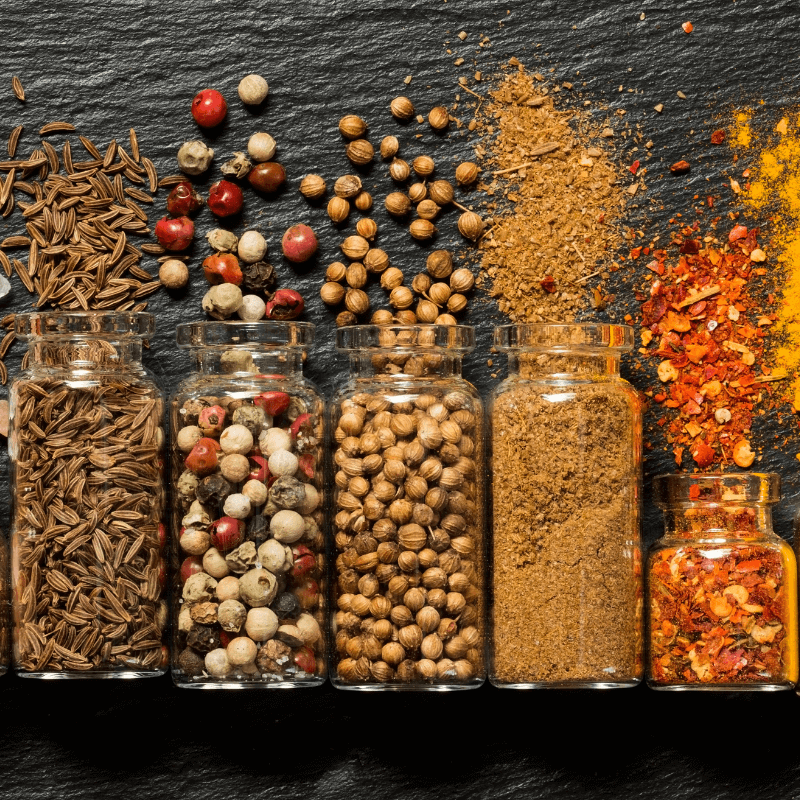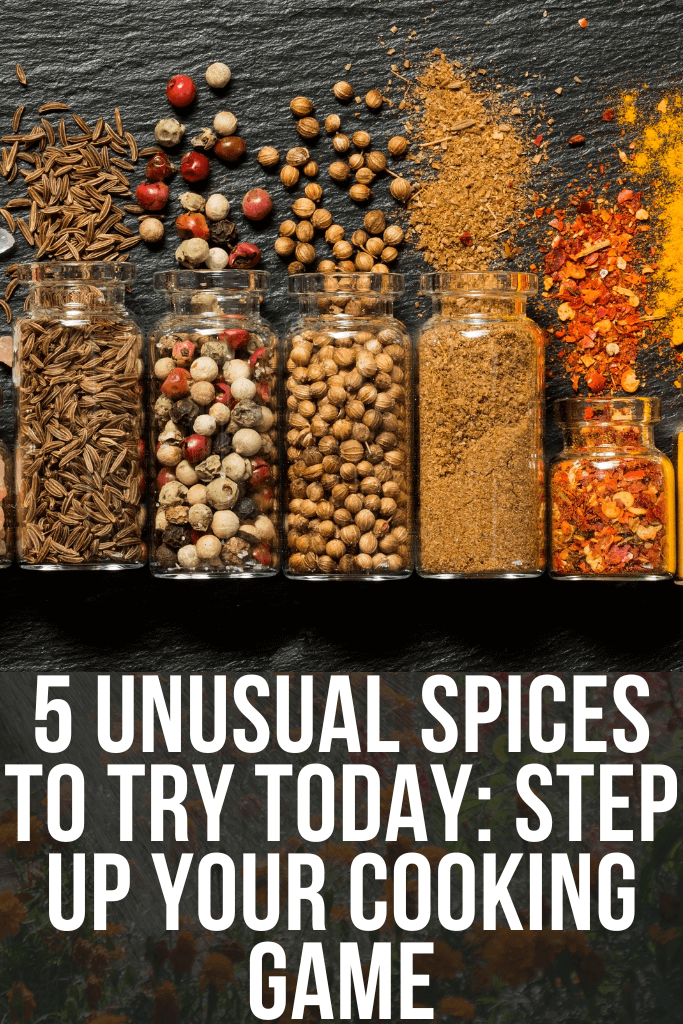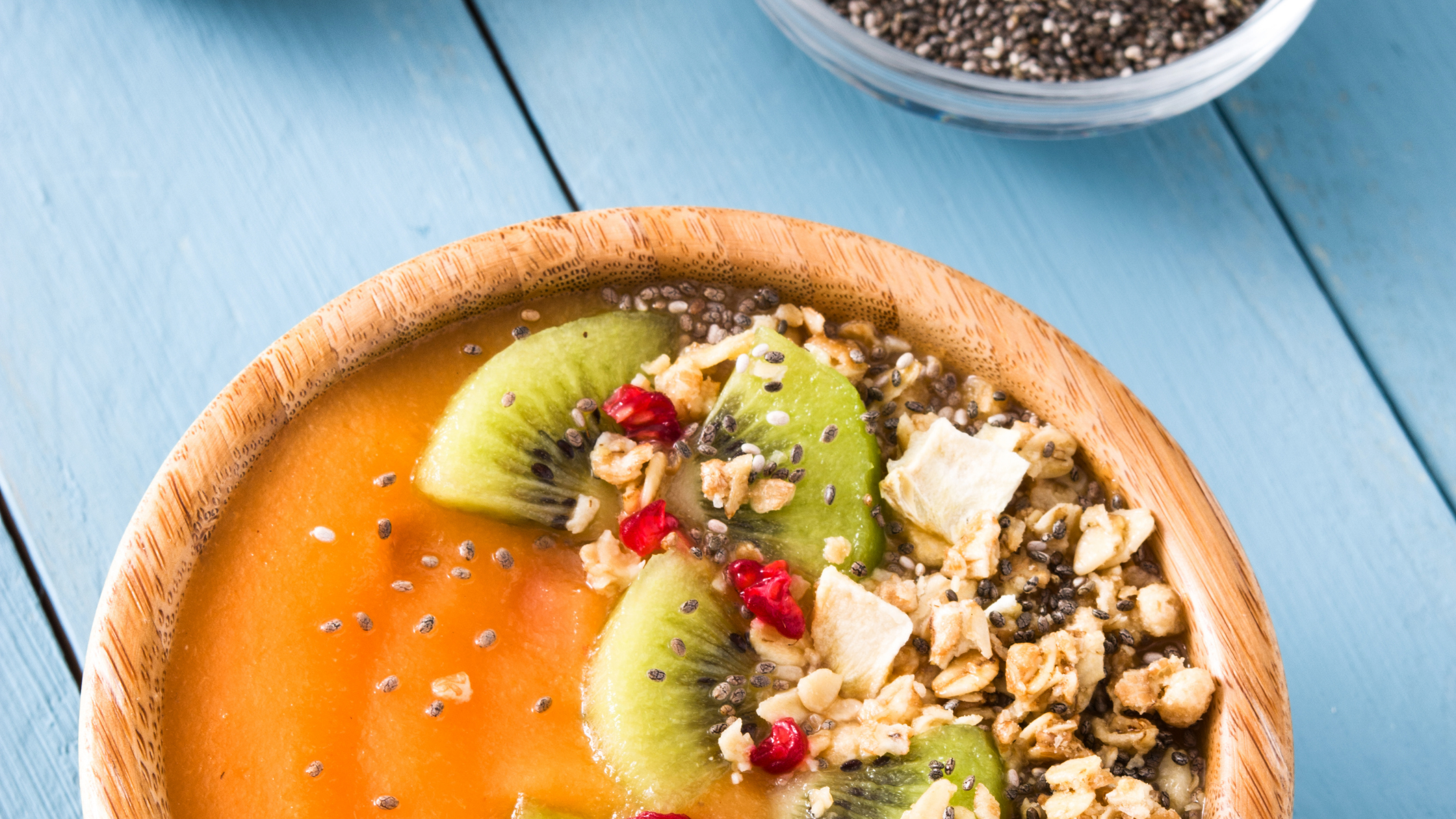5 Unusual Spices to Try Today: Step Up Your Cooking Game
Discover some unusual spices to step up your cooking game and impress your guests. From the tangy kick of amchur powder to the nutty flavor of juniper berries, this article explores five unique spices and how to use them in different cuisines. Learn how to create your own spice blends and take safety precautions when handling spices. Elevate your dishes and expand your culinary horizons with these unusual spices.
Spices are an essential part of cooking. They add flavor, aroma, and color to dishes and can take a simple recipe to the next level. While many cooks stick to the basics such as salt, pepper, and garlic powder, there are a plethora of other spices that can be used to enhance your cooking game. In this article, we will explore some unusual spices that you can try today to elevate your dishes and impress your guests.
Many people are intimidated by the idea of using new spices, but the truth is that experimenting with different flavors can be a fun and rewarding experience. By incorporating new spices into your cooking, you can add depth and complexity to your dishes. Whether you are a seasoned cook or just starting out, trying new spices can help you expand your culinary horizons and discover new favorite flavors.
In the following paragraphs, we will introduce you to some unusual spices that you may not have tried before. From the smoky flavor of chipotle powder to the floral notes of lavender, these spices will add a unique twist to your meals and take your cooking game to the next level. So, get ready to spice things up and take your taste buds on a journey!
Understanding Spices
Spices are an essential component of cooking. They add flavor, aroma, and color to dishes, making them more appealing to the senses. In culinary art, spices are used to enhance the taste of food and to create unique flavor combinations.
Spices are derived from various parts of plants, including seeds, roots, bark, flowers, and fruits. They are typically dried and ground into a powder or used in their whole form. Spices can be used alone or in combination with other spices to create complex flavors.
The taste and smell of spices are closely related. The aroma of a spice can affect the perception of its taste. For example, the smell of cinnamon can evoke the taste of sweetness. Similarly, the smell of cumin can evoke the taste of earthiness.
Seasoning is the process of adding spices to food to enhance its flavor. It is important to use the right amount of seasoning to achieve the desired taste. Over-seasoning can overpower the natural flavor of the food, while under-seasoning can make it bland.
Some spices are more commonly used than others. For example, salt and pepper are staples in most kitchens. However, there are many unusual spices that can add a unique flavor to dishes. These include cardamom, saffron, star anise, and sumac.
In summary, spices are an important component of cooking. They add flavor, aroma, and color to dishes, making them more appealing to the senses. Understanding spices and how to use them can help elevate your cooking game and create unique and delicious dishes.
Exploring Unusual Spices
When it comes to cooking, spices are an essential ingredient that can make all the difference in flavor. While many are familiar with the usual suspects like salt, pepper, and cumin, there are plenty of other spices out there that can take your dishes to the next level. In this section, we will explore five unusual spices that are worth trying today.
Amchur Powder
Amchur powder is a spice commonly used in Indian cuisine. It is made from dried green mangoes that have been ground into a fine powder. This spice has a sour and slightly sweet flavor that can add a tangy kick to dishes. Amchur powder is often used in marinades, chutneys, and curries.
Juniper Berries
Juniper berries are a spice that is commonly used in Middle Eastern cuisine. They have a nutty and slightly sweet flavor that can add depth to dishes. Juniper berries are often used in marinades, rubs, and sauces. They are also a key ingredient in gin.
Sumac
Sumac is a spice that is commonly used in Middle Eastern cuisine. It has a tangy and slightly sour flavor that can add a pop of brightness to dishes. Sumac is often used as a seasoning for meat, fish, and vegetables. It can also be used to add flavor to dips and dressings.
Galangal
Galangal is a spice that is commonly used in Southeast Asian cuisine. It has a slightly spicy and citrusy flavor that can add depth to dishes. Galangal is often used in curries, soups, and stir-fries. It can also be used to add flavor to marinades and sauces.
Cardamom
Cardamom is a spice that is commonly used in Indian cuisine. It has a sweet and slightly spicy flavor that can add warmth to dishes. Cardamom is often used in desserts, chai tea, and curries. It can also be used to add flavor to marinades and rubs.
Overall, these five unusual spices can add unique flavors to your dishes. Whether you're cooking Middle Eastern cuisine or Indian cuisine, there's a spice on this list that can help take your cooking game to the next level.
Spices in Different Cuisines
Mexican Cuisine
Mexican cuisine is known for its bold and spicy flavors. Cumin, chili powder, and oregano are some of the most commonly used spices in Mexican cooking. These spices are used to flavor dishes such as burritos, tacos, and enchiladas. Mexican cuisine also uses a variety of fresh herbs, such as cilantro and epazote, to add flavor to dishes.
Indian Cuisine
Indian cuisine is famous for its use of spices. A typical Indian spice cabinet will contain a wide range of spices, including cumin, coriander, turmeric, and cardamom. These spices are used to flavor dishes such as curries, biryanis, and masalas. Indian cuisine also uses a lot of garam masala, which is a blend of different spices, including cinnamon, cloves, and nutmeg.
Middle Eastern Cuisine
Middle Eastern cuisine is known for its use of aromatic spices such as cinnamon, cumin, and coriander. These spices are used to flavor dishes such as rice pilaf, kebabs, and hummus. Middle Eastern cuisine also uses a lot of fresh herbs, such as mint and parsley, to add flavor to dishes.
Italian Cuisine
Italian cuisine uses a variety of spices, but the most commonly used are garlic, oregano, and basil. These spices are used to flavor dishes such as pasta, pizza, and meatballs. Italian cuisine also uses a lot of olive oil and Parmesan cheese to add flavor to dishes.
Overall, spices play a crucial role in adding flavor to different cuisines. By experimenting with different spices, you can create unique and delicious dishes that will impress your friends and family.
Using Spices in Various Dishes
Spices are an essential part of cooking that can transform a dish from ordinary to extraordinary. They add flavor, aroma, and color to a wide range of dishes and can be used in various ways. In this section, we will explore the different ways spices can be used in meat dishes, vegetable dishes, soups, pasta dishes, and desserts.
Spices in Meat Dishes
Spices can be used to add depth and complexity to meat dishes. Here are some examples of spices that work well with different types of meat:
- Beef: cumin, coriander, paprika, chili powder, garlic powder, and rosemary.
- Chicken: thyme, oregano, sage, garlic powder, and paprika.
- Fish: cumin, coriander, turmeric, and ginger.
- Sausage: fennel seeds, paprika, and garlic powder.
Spices in Vegetable Dishes
Spices can also be used to enhance the flavor of vegetable dishes. Here are some examples of spices that work well with different types of vegetables:
- Veggies: cumin, coriander, turmeric, and ginger.
- Broccoli: garlic powder, red pepper flakes, and lemon zest.
- Carrots: cumin, coriander, and ginger.
- Potatoes: rosemary, thyme, and paprika.
Spices in Soups
Spices can add warmth and depth to soups. Here are some examples of spices that work well in different types of soups:
- Chicken noodle soup: garlic powder, thyme, and rosemary.
- Tomato soup: basil, oregano, and garlic powder.
- Lentil soup: cumin, coriander, and turmeric.
- Minestrone soup: basil, oregano, and thyme.
Spices in Pasta Dishes
Spices can also be used to elevate the flavor of pasta dishes. Here are some examples of spices that work well in different types of pasta dishes:
- Spaghetti Bolognese: basil, oregano, and garlic powder.
- Fettuccine Alfredo: nutmeg and garlic powder.
- Penne Arrabbiata: red pepper flakes and oregano.
- Lasagna: basil, oregano, and garlic powder.
Spices in Desserts
Spices can also be used in desserts to add warmth and depth. Here are some examples of spices that work well in different types of desserts:
- Apple beignets: cinnamon and nutmeg.
- Pepper spiced cookies: cinnamon, ginger, and black pepper.
- Spice cookies: cinnamon, ginger, and nutmeg.
- Pumpkin pie: cinnamon, ginger, nutmeg, and allspice.
By using spices in various dishes, you can take your cooking game to the next level. Whether you're making beef burritos, chicken fajitas, or breakfast omelets, spices can add flavor and depth to your dishes. So, don't be afraid to experiment with different spices and see what works best for you.
Creating Your Own Spice Blends
Creating your own spice blends is a great way to add unique flavors to your cooking. Not only does it allow you to tailor the blend to your personal taste, but it also allows you to experiment with different combinations of spices.
To create your own spice blend, start by choosing a base spice. This could be something like cumin, coriander, or paprika. From there, add in other spices that complement the base spice. For example, if you're using cumin as your base, you could add in coriander, chili powder, and garlic powder.
When creating a spice blend, it's important to consider the dish you'll be using it for. For example, if you're making a rub for meat, you may want to add in some brown sugar or smoked paprika for a sweet and smoky flavor. If you're making a seasoning for vegetables, you may want to add in some herbs like thyme or rosemary.
Once you've created your spice blend, store it in an airtight container in a cool, dry place. This will help to preserve the flavor and prevent the spices from clumping together.
Creating your own spice blends is a fun and easy way to add new flavors to your cooking. Whether you're mixing up a rub for meat, seasoning for vegetables, or a spice blend for sauces and marinades, the possibilities are endless. So why not give it a try and see what delicious combinations you can come up with?
Safety Precautions When Handling Spices
When it comes to cooking with spices, safety should always be a top priority. Here are some key safety precautions to keep in mind when handling spices:
- Avoid skin contact: Many spices can cause skin irritation or even burns if they come into contact with the skin. Be sure to wear gloves when handling hot peppers or other particularly potent spices.
- Store spices properly: To prevent the growth of bacteria, it's important to store spices in a cool, dry place. Avoid storing spices near the stove or other sources of heat, as this can cause them to lose their flavor and potency more quickly.
- Use caution when grinding spices: If you're using a mortar and pestle or spice grinder to grind your own spices, be sure to use caution. These tools can create a lot of dust, which can irritate the eyes and lungs if inhaled.
- Label your spices: It's easy to get different spices mixed up, especially if they look similar. To avoid confusion, be sure to label your spices clearly and keep them in separate containers.
- Be mindful of allergies: Some people may have allergies or sensitivities to certain spices. If you're cooking for others, be sure to ask about any food allergies or intolerances beforehand.
By taking these simple safety precautions, you can ensure that your cooking with spices is both delicious and safe.
Conclusion
Trying out new spices can be a fun and exciting way to step up your cooking game. The world of spices is vast and varied, and there are plenty of unusual options to choose from. Whether you're looking to add some heat, sweetness, or complexity to your dishes, there's a spice out there that can do the trick.
By experimenting with different spices, you can expand your palate and discover new flavors that you never knew existed. Some spices may be more challenging to work with than others, but with a little bit of practice and patience, you can learn to incorporate them into your cooking with ease.
Remember that spices can be powerful, so it's important to use them in moderation and to taste as you go. Start with small amounts and adjust as needed to achieve the desired flavor profile. And don't be afraid to mix and match spices to create your own unique blends.
Incorporating unusual spices into your cooking can also be a great way to impress your friends and family. They may be surprised by the unexpected flavors and textures in your dishes, and you may even inspire them to try some new spices of their own.
Overall, trying out unusual spices is a great way to elevate your cooking game and add some excitement to your meals. So why not give it a try today?






